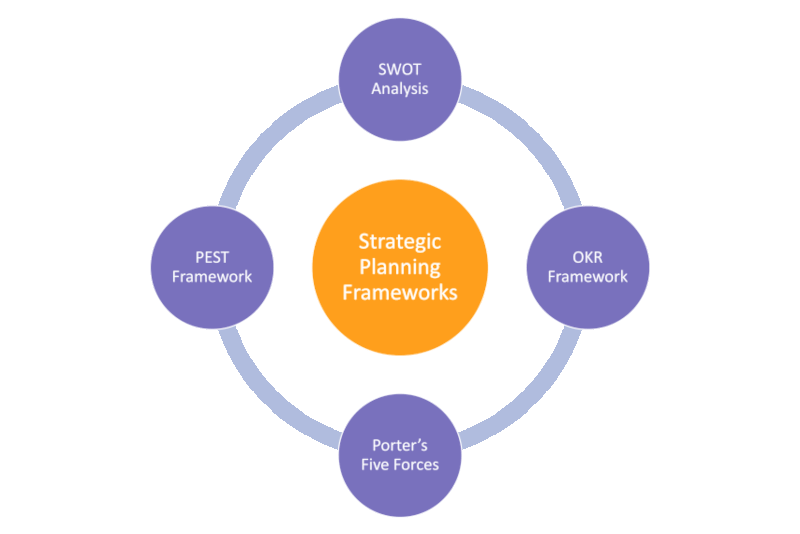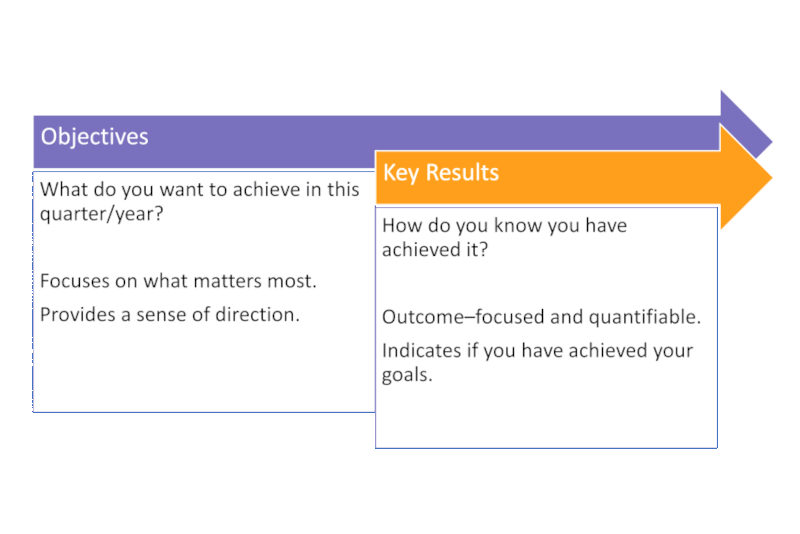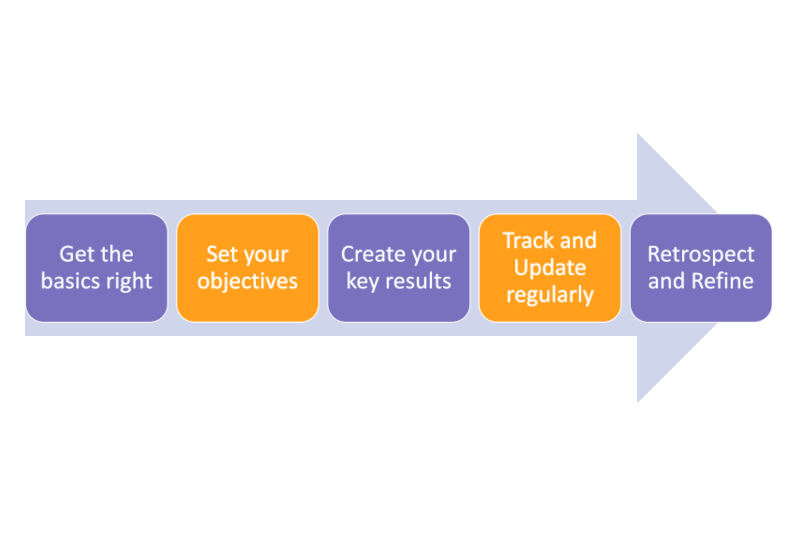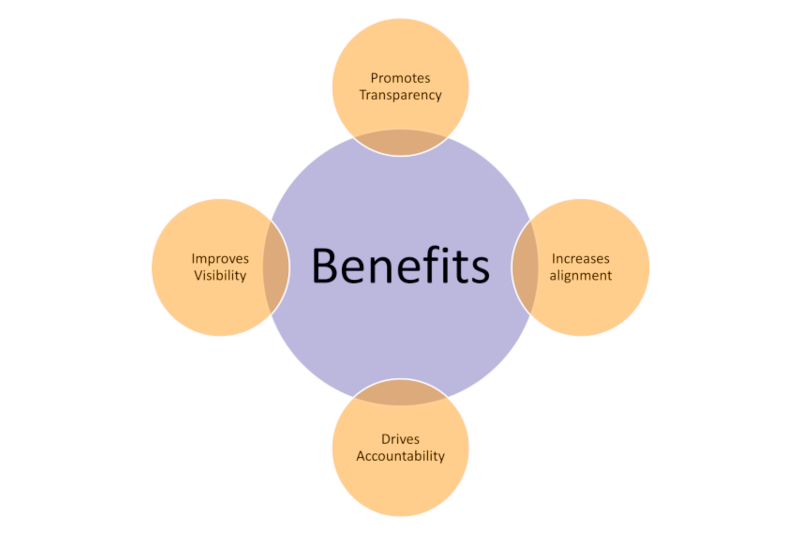What is the OKR Framework?
Before we dive into what the OKR Framework is all about, it is important to understand what strategic planning frameworks are.
A company's success lies on coming up with the right ideas and executing it well enough. Well, this is easier said than done. One of the most challenging issues for a company is to transform these ideas into actionable strategy. This is what we call as a strategic planning process.
The strategic planning process can be difficult and time consuming, but a strategic planning framework, like OKRs can help. Companies use strategic planning frameworks to outline plans to achieve future goals.
Now, there are a dozen frameworks out there. However, a one-size-fit-all out framework doesn't exist. Each framework has its own pros and cons. It is wise to try out different frameworks and find the best possible fit for your team.
Here are four popular strategic planning frameworks.

SWOT Analysis Framework
SWOT Analysis is one of the most popular strategic planning frameworks. SWOT is an acronym that stands for Strengths, Weaknesses, Opportunities and Threats. This framework is usually used at the start of your strategic planning process to gather essential information to lay out your strategy.
SWOT Analysis is best used to understand what internal and external factors can impact your strategy.
OKR Framework
A big part of strategic planning is setting goals for your company. And this is where OKRs come in handy. OKRs have become a buzzword recently and all for the right reasons. OKR stands for Objectives and Key Results.
- Objectives - Things you want to achieve
- Key Results - Measurable outcomes that indicate you have achieved your objective.
OKRs are set to be ambitious and are often called as moon shots. OKRs are best used when you are going after audacious goals, and you want to keep a close eye on the progress made.
Porter's Five Forces Framework
Developed by Michael E. Porter, this framework outlines five forces you must be aware of and monitor. This is best used for competitive analysis. The five forces to identify are:
- Potential new entrants to the industry: How easy or hard is it for new competitors to enter and thrive in the industry?
- Competition in the industry: Are there are lot of competitors? How rapidly are they growing?
- Power of suppliers: How much bargaining power do we have? Depends on alternatives present for buyers and what are the chances our customers will switch.
- Power of customers: How much bargaining power do customers have? If the product or service is widely available, the power of customers will be high.
- Threat of substitutes: Is your product/service easily replaced with another product/service? Do you have an unique differentiator to be competitive.
If your strategy is strongly influenced by your competitors, this framework will help you understand what the essential pieces of your strategic plan are.
PEST Framework
The PEST framework is best used to understand the external factors that can impact your company. The PEST analysis is like the SWOT Analysis except that in PEST, you are only focusing on external factors and solutions.
PEST is an acronym that stands for Political, Economic, Social and Technological.
- Political - Government regulations that might impact how you can correspond with your customers. Examples: Taxes, Trade Tariffs
- Economic - Are you customers holding on to their wallets tightly? If so, why? Examples: Recession, Inflation Rate, Unemployment Rate
- Social - What type of customers are you dealing with? Examples: Demographics, culture attitudes, workplace trends
- Technological - The role and development of technologies within the industry. Examples: New technologies that you can be using. Do any of your competitors have access to new technologies that could redefine their products?
Conclusion
Strategic planning is a crucial step in your journey to success regardless of whether you are just starting out or have decades of experience. While it is important to plan properly, it is also vital to execute your plan properly. Choose a framework that best suits your vision and team.


